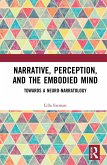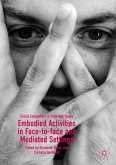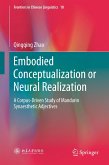This book presents the first cross-linguistic experiment on how the abstract concepts of LIFE and DEATH are embodied in English, German, and Persian. Using two complementary approaches, it first identifies the prototypes color, form, vehicle, material, place, body parts, actions, direction and position, smell, and taste that ground these concepts in bodily experiences. It then reports and explains the cultural reasoning behind prototype choices in abstract and metaphoric language. Statistical analyses, including regression modeling, reveal how education, religion, nationality, age, gender, and handedness predict prototype selection across the three languages. Early chapters trace the shift from formal linguistics to cognitive semantics and embodiment, discussing metaphor theories and prototypicality, while later chapters present detailed language-specific findings. Clear and engaging, this interdisciplinary study advances research on embodied language across cultures, offering essential insights for linguistics, psychology, philosophy, and cognitive science, accessible to both specialists and general readers.
Bitte wählen Sie Ihr Anliegen aus.
Rechnungen
Retourenschein anfordern
Bestellstatus
Storno








